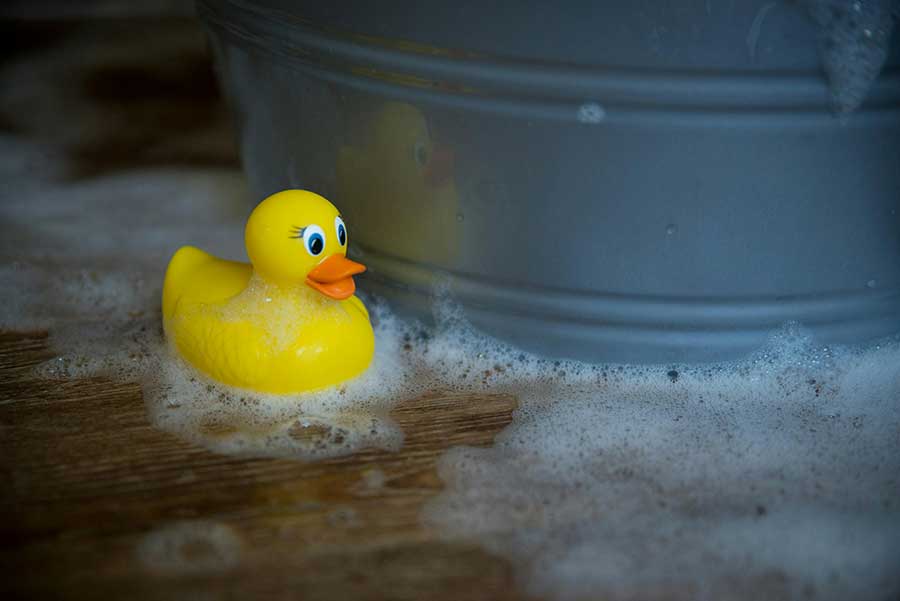
30 Dec Top 10 Tips to Help Parents Overcome Bath Time Challenges for Autistic Children
Bath time can be particularly challenging for parents of children with autism, especially when sensory sensitivities such as tactile hypersensitivity are involved. However, these challenges don’t need to be overwhelming. With the right strategies in place, bath time can become a more manageable, and even enjoyable, experience for both you and your child.
Here are our top 10 tips to help parents overcome bath time challenges:
-
Introduce Gradual Exposure
If your child resists bath time, try introducing them to water gradually. Start by letting them play with water outside the tub, or use a small basin of water with toys. Gradually move towards standing in an empty tub, then slowly add small amounts of water. This step-by-step approach can reduce anxiety and help your child adjust to the sensation of water at their own pace.
-
Use Visual Schedules for Predictability
Children with autism often thrive on routine and predictability. A visual schedule with pictures showing the steps of bath time—undressing, getting into the bath, washing, drying off—can provide clear structure. Knowing what to expect can help reduce anxiety and give your child a sense of control over the process.
-
Allow Your Child to Choose
Giving your child choices can empower them and make the experience feel less overwhelming. Let them choose the temperature of the water (within reason), select their favourite bath toys, or decide which soap or shampoo to use. Allowing small choices can help them feel more in control and reduce resistance.
-
Experiment with Sensory-Friendly Towels
Tactile hypersensitivity often extends to the feeling of towels. Opt for extra-soft towels, such as microfibre or bamboo, which are gentler on sensitive skin. You can also warm the towel in a dryer before use to make the experience more comforting. For some children, air drying or using a soft robe may be a better alternative.
-
Make Toothbrushing More Tolerable
Toothbrushing is another common struggle for children with sensory sensitivities. Using a toothbrush with extra-soft bristles or a silicone brush may feel less abrasive on their gums. Experiment with different types of toothpaste—milder flavours, non-foaming varieties, or even flavourless options—until you find one that is more tolerable for your child.
-
Turn Bath Time into Playtime
Distraction can be a powerful tool. Turning bath time into a fun experience can shift the focus from uncomfortable sensations to something more enjoyable. Introduce bath toys, coloured bath bombs (if your child enjoys visual stimulation), or waterproof bath crayons. Creating a playful atmosphere can make the process feel less like a task and more like a game.
-
Provide Deep Pressure for Calming
Before or after bath time, some children benefit from deep pressure activities that help regulate their sensory system. This could include wrapping them in a weighted blanket, giving a firm hug, or rolling them tightly in a towel. Deep pressure input can have a calming effect and reduce anxiety.
-
Use Sensory-Friendly Bath Products
The texture and smell of soaps, shampoos, and conditioners can be overwhelming for children with hypersensitivity. Try unscented, hypoallergenic products with a mild texture and minimal foam. Many sensory-friendly bath products are available, specifically designed for children with sensitivities.
-
Keep the Bathroom Environment Calm
To reduce sensory overload, keep the bathroom environment calm and soothing. Dim the lights if possible, avoid loud or sudden noises, and consider playing soft, calming music or white noise. Creating a calm atmosphere can reduce the sensory input that might overwhelm your child during bath time.
-
Offer Positive Reinforcement
Reward your child for any level of participation in bath time, no matter how small. Offering praise, encouragement, or a small reward after successful steps—whether it’s stepping into the bath, brushing their teeth, or tolerating a new towel—can build positive associations with the routine. Over time, this can help them feel more comfortable and less resistant to bath time.
Helping your child navigate bath time when they have sensory sensitivities can seem like a daunting task, but using these strategies can make the experience more manageable. Remember that every child is different, so it may take time and experimentation to find the right combination of techniques. By being patient, flexible, and understanding of their unique sensory needs, bath time can eventually become a more positive experience for both you and your child.

